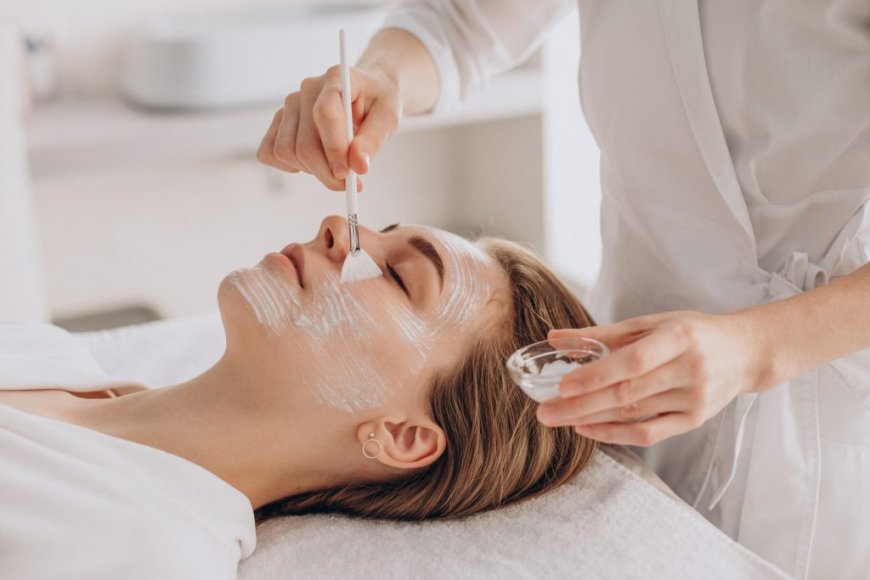A Guide to Hyperpigmentation Treatment and Prevention

Hyperpigmentation, a common skin condition characterized by darkened patches or spots, can affect people of all skin types. These darker areas of the skin result from an excess production of melanin, the pigment responsible for skin color. Hyperpigmentation can be caused by various factors, including sun exposure, hormonal changes, inflammation, and certain medications. Finding the best skin pigmentation treatment is necessary. While it is generally harmless, hyperpigmentation can be distressing for those who experience it, leading many to seek effective treatment and prevention strategies. This guide explores the causes, treatments, and preventive measures for hyperpigmentation.
What is Hyperpigmentation?
Hyperpigmentation manifests in several forms, each with distinct causes:
- Sunspots (Solar Lentigines) : These are caused by prolonged exposure to ultraviolet (UV) rays from the sun. They commonly appear on sun-exposed areas such as the face, hands, and arms.
- Melasma : Often triggered by hormonal changes, melasma is more common in women, especially during pregnancy or when using oral contraceptives. It presents as brown or gray-brown patches, primarily on the face.
- Post-Inflammatory Hyperpigmentation (PIH) : This occurs after an injury or inflammation of the skin, such as acne, eczema, or psoriasis. It is more prevalent in individuals with darker skin tones.
Treatment Options for Hyperpigmentation
Several treatments can help reduce hyperpigmentation, ranging from topical agents to advanced dermatological procedures. The effectiveness of these treatments varies depending on the type and severity of the hyperpigmentation.
Topical Treatments
- Hydroquinone : A widely used depigmenting agent, hydroquinone works by inhibiting the enzyme tyrosinase, which plays a crucial role in melanin production. Over-the-counter products typically contain 2% hydroquinone, while prescription formulations may have 4% or more.
- Retinoids : Derived from vitamin A, retinoids (like tretinoin) promote cell turnover and exfoliation, helping to fade dark spots. They are often used in conjunction with other treatments for enhanced efficacy.
- Vitamin C : Known for its antioxidant properties, vitamin C can help lighten hyperpigmentation by inhibiting melanin synthesis. It also protects the skin from further damage by neutralizing free radicals.
- Azelaic Acid : This naturally occurring acid has anti-inflammatory and depigmenting properties, making it effective for treating PIH and melasma.
- Kojic Acid : Derived from fungi, kojic acid is another melanin-inhibiting agent that can lighten dark spots and improve overall skin tone.
Chemical Peels
Chemical peels involve applying a solution to the skin that exfoliates the outer layers, promoting new, healthy skin growth. Superficial peels using alpha-hydroxy acids (AHAs) like glycolic acid or lactic acid are effective for mild hyperpigmentation, while deeper peels may be necessary for more severe cases.
Laser Therapy
Laser treatments target hyperpigmented areas with concentrated light energy, breaking down excess melanin. Types of lasers used include:
- Fractional Lasers : These lasers create micro-injuries in the skin, promoting collagen production and skin renewal.
- Q-Switched Lasers : These lasers specifically target melanin, making them effective for treating sunspots and PIH.
Microdermabrasion and Dermabrasion
These procedures involve physically exfoliating the skin to remove the outer layers, helping to reduce the appearance of dark spots. Microdermabrasion is less invasive and requires minimal downtime, while dermabrasion is more intensive and may be better suited for severe hyperpigmentation.
Preventive Measures
Preventing hyperpigmentation is often easier than treating it. The following strategies can help maintain an even skin tone:
- Sun Protection : Since UV exposure is a significant cause of hyperpigmentation, daily sun protection is crucial. Use broad-spectrum sunscreens with an SPF of 30 or higher, wear protective clothing, and seek shade whenever possible.
- Avoid Picking at Skin : Picking at acne, scabs, or other skin lesions can lead to PIH. It is essential to resist the urge and allow the skin to heal naturally.
- Gentle Skincare Routine : Use gentle cleansers and avoid harsh scrubs that can irritate the skin. Incorporate products with anti-inflammatory and skin-soothing ingredients.
- Regular Exfoliation : Regular exfoliation with mild chemical exfoliants like AHAs or BHAs can help prevent the buildup of dead skin cells and reduce the risk of hyperpigmentation.
- Hydration : Keeping the skin well-hydrated with moisturizers can enhance its barrier function and reduce the likelihood of inflammation and subsequent hyperpigmentation.
Conclusion
Hyperpigmentation, although common and typically harmless, can be a source of cosmetic concern for many individuals. Understanding the various types of hyperpigmentation and their causes is the first step towards effective treatment and prevention. With a combination of appropriate treatments and preventive measures, it is possible to achieve and maintain an even skin tone. As always, consulting with a dermatologist is recommended to tailor a treatment plan that addresses individual skin concerns and needs.
In conclusion, hyperpigmentation is a condition that affects people of all ages and skin types, but with the right approach, it can be managed effectively. From topical treatments to advanced dermatological procedures, there are various options available to lighten dark spots and improve overall skin tone. However, prevention is key, and adopting sun protection measures, maintaining a gentle skincare routine, and avoiding skin trauma can significantly reduce the risk of developing hyperpigmentation. You can choose other treatments such as hydrafacial treatment , dental treatments and Botox treatment for face .
It's important to remember that treating hyperpigmentation is not a one-size-fits-all approach. What works for one person may not work for another, and patience is often required as results may take time to become apparent. Consulting with a dermatologist or skincare professional can provide personalized recommendations tailored to individual needs and concerns.
Ultimately, achieving clear, even-toned skin is possible with the right combination of treatments, preventive measures, and patience. By taking proactive steps to care for your skin and seeking professional guidance when needed, you can minimize the impact of hyperpigmentation and feel confident in your skin's appearance.












